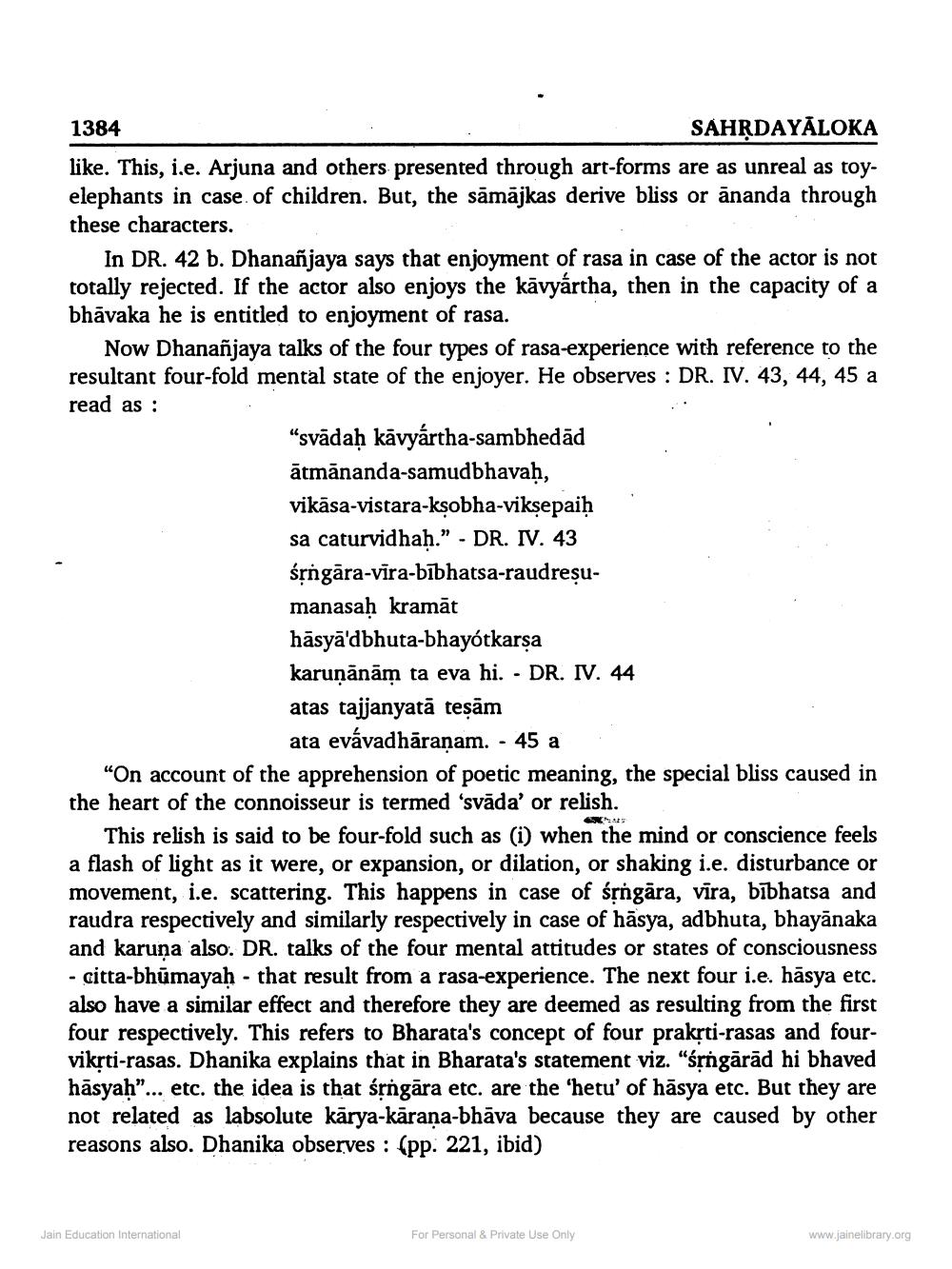________________
1384
SAHRDAYĀLOKA
like. This, i.e. Arjuna and others presented through art-forms are as unreal as toyelephants in case of children. But, the sāmājkas derive bliss or ānanda through these characters.
In DR. 42 b. Dhananjaya says that enjoyment of rasa in case of the actor is not totally rejected. If the actor also enjoys the kāvyártha, then in the capacity of a bhāvaka he is entitled to enjoyment of rasa.
Now Dhanañjaya talks of the four types of rasa-experience with reference to the resultant four-fold mental state of the enjoyer. He observes : DR. IV. 43, 44, 45 a read as :
"svādaḥ kāvyártha-sambhedād ātmānanda-samudbhavaḥ, vikāsa-vistara-ksobha-viksepaiḥ sa caturvidhah." - DR. IV. 43 śrngāra-vira-bībhatsa-raudresumanasaḥ kramāt hāsyā'dbhuta-bhayótkarsa karuņānām ta eva hi. - DR. IV. 44 atas tajjanyatā tesām
ata evávadhāranam. - 45 a "On account of the apprehension of poetic meaning, the special bliss caused in the heart of the connoisseur is termed 'svāda' or relish.
This relish is said to be four-fold such as (i) when the mind or conscience feels a flash of light as it were, or expansion, or dilation, or shaking i.e. disturbance or movement, i.e. scattering. This happens in case of śộngāra, vīra, bibhatsa and raudra respectively and similarly respectively in case of hāsya, adbhuta, bhayānaka and karuna also. DR. talks of the four mental attitudes or states of consciousness - citta-bhūmayaḥ - that result from a rasa-experience. The next four i.e. hāsya etc. also have a similar effect and therefore they are deemed as resulting from the first four respectively. This refers to Bharata's concept of four prakti-rasas and fourvikrti-rasas. Dhanika explains that in Bharata's statement viz. "śrngārād hi bhaved hāsyah"... etc. the idea is that śrngāra etc. are the 'hetu' of hāsya etc. But they are not related as labsolute kārya-karana-bhāva because they are caused by other reasons also. Dhanika observes : (pp. 221, ibid)
Jain Education International
For Personal & Private Use Only
www.jainelibrary.org




